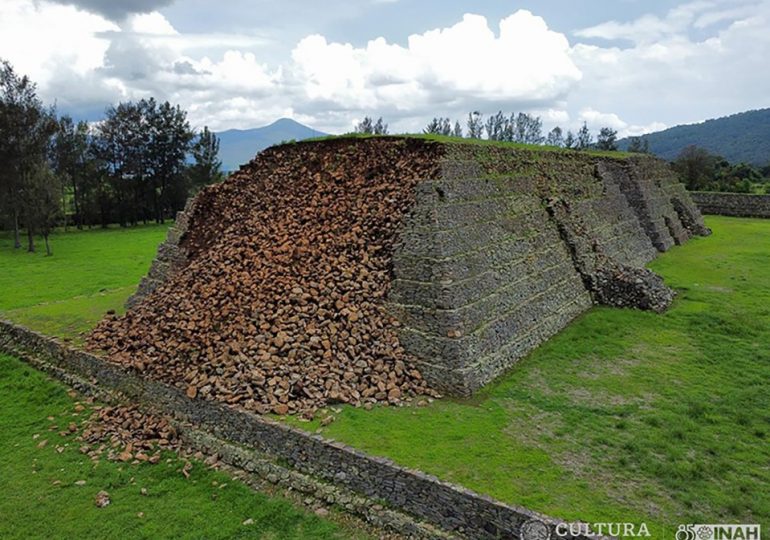DOOM is expected after a pyramid that was used by an ancient tribe for human sacrifices caved in, its descendants say.
Devastating storms ravaged one of the twin pyramids on July 30, washing away one side completely, as seen in pictures.
NewsflashThe pyramids have collapsed after heavy rains in Mexico devastated one of its sides[/caption]
NewsflashThe twin pyramids before the damage of July 30 in Michoacán state[/caption]
Now experts have warned that the caved in remains could be a sign that a huge natural disaster is about to hit their descendants.
It was built by ancestors of the modern Purépecha people, a bloodthirsty ancient tribe that defeated the Aztecs.
Historians say the ancient Purépecha tribe used the Yácata pyramids for human sacrifices to their most important god Kurikweri.
The Yácata pyramids are on found in the archaeological site Ihuatzio in the Michoacán state.
Tariakuiri Alvarez said that the storm may indicate impending doom, as per their indigenous traditions.
He said: “For our ancestors, the builders, this was a bad omen that indicated the proximity of an important event.
“Before the arrival of the conquistadors, something similar happened, which for the Purépecha worldview of that time was because the gods Nana Kuerhaepiri and K’eri Kurikweri were displeased.”
The Purépecha defeated the Aztecs and ruled for 400 years before the Spanish invasion in 1519.
The Ihuatzio archaeological zone was occupied from 900 AD first by the Aztecs and then by the Purepecha until the arrival of the Spanish invaders.
Photographs of the damage show that the suffered extensively from the torrential rain.
The Mexican National Institute for Anthropology and History (INAH) on 7th August released a statement.
“On Tuesday night, a collapse occurred in the central part of the southern facade of one of the pyramidal bases of the Ihuatzio Archaeological Zone.
“This happened because of the heavy rainfall in the basin of Lake Pátzcuaro, with an accumulation above the expected average of precipitation.
“High temperatures, previously recorded in the area, and the consequent drought caused cracks that favoured the filtration of water into the interior of the pre-Hispanic building.
“Beginning in the early hours of July 30, personnel moved to the heritage site to assess the damage caused.
“Their observations confirmed the damage to at least six of the stepped bodies of the so-called South Base, both in its exterior wall of slabs, as well as in its core and retaining wall.
“Damage assessment activities continue and are focused not only on recovering the affected part, but also on thoroughly repairing the structure of the building.
“Work carried out in the past, using techniques and materials that are not currently in use due to their negative effects, has an impact on the conservation conditions of the pre-Columbian structure.
“For this reason, the issue is addressed from an interdisciplinary perspective, in order to provide the building with the necessary conditions for its restoration and conservation.”
NewsflashThe damage was brought on by torrential rain, experts say[/caption]
Leave a comment








